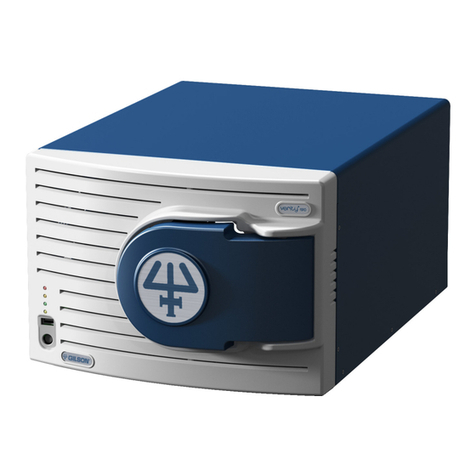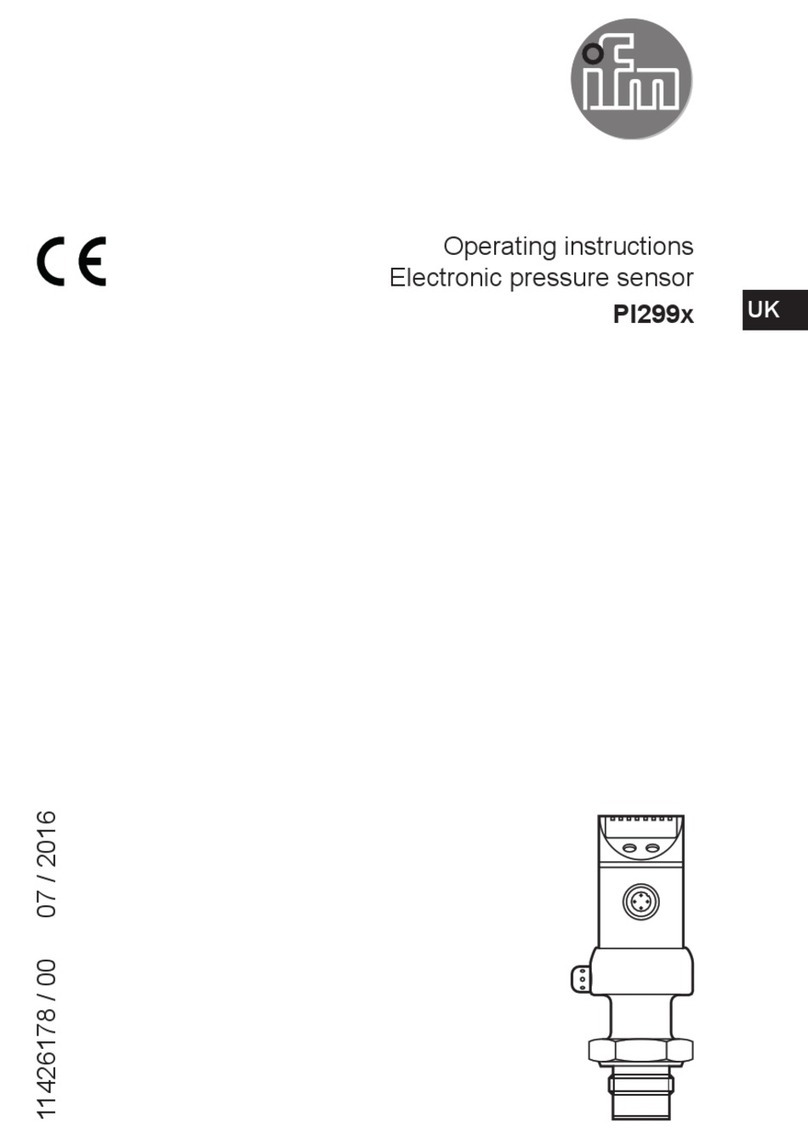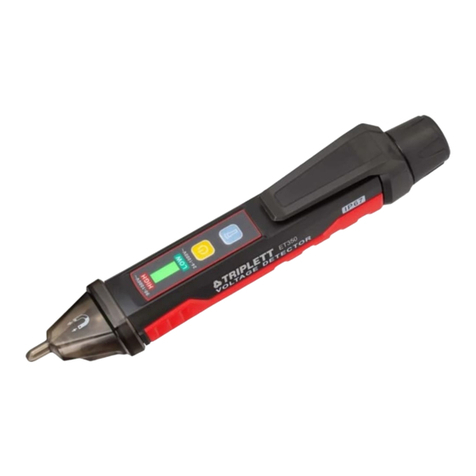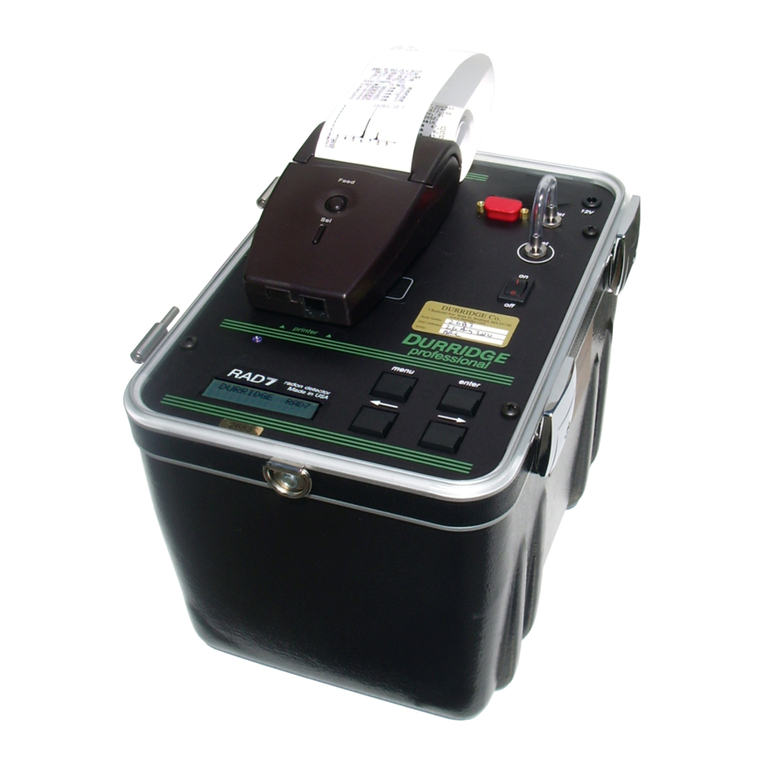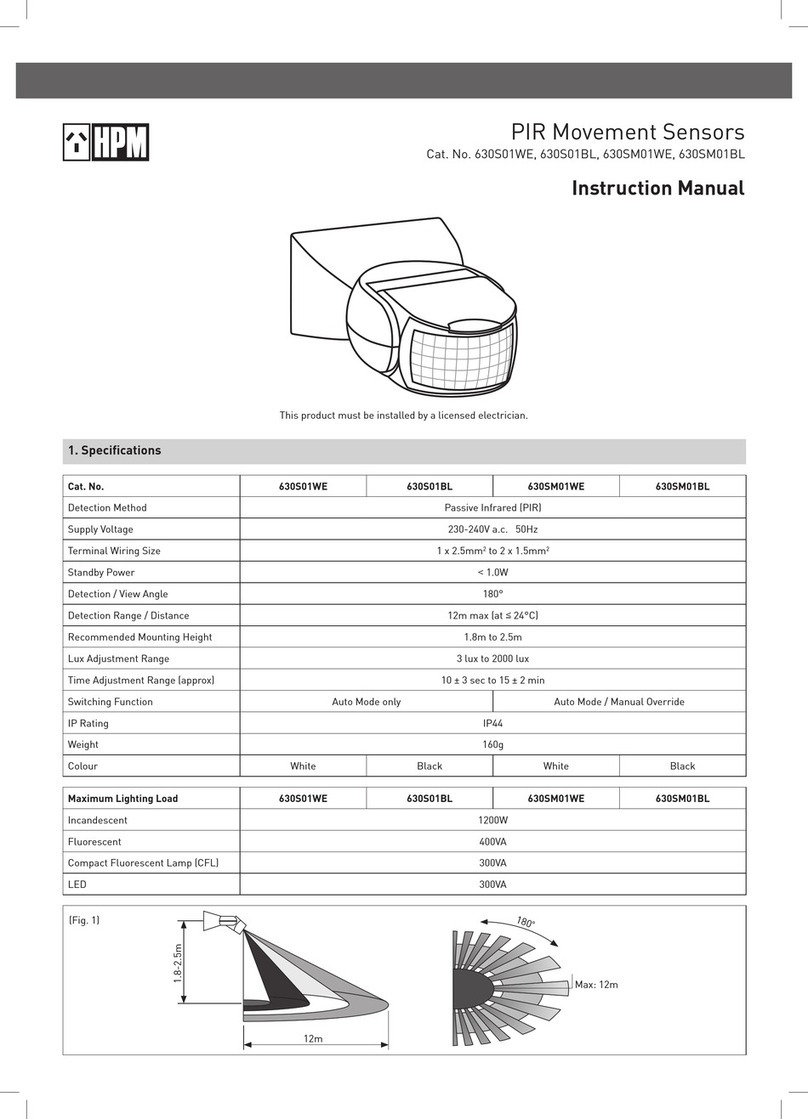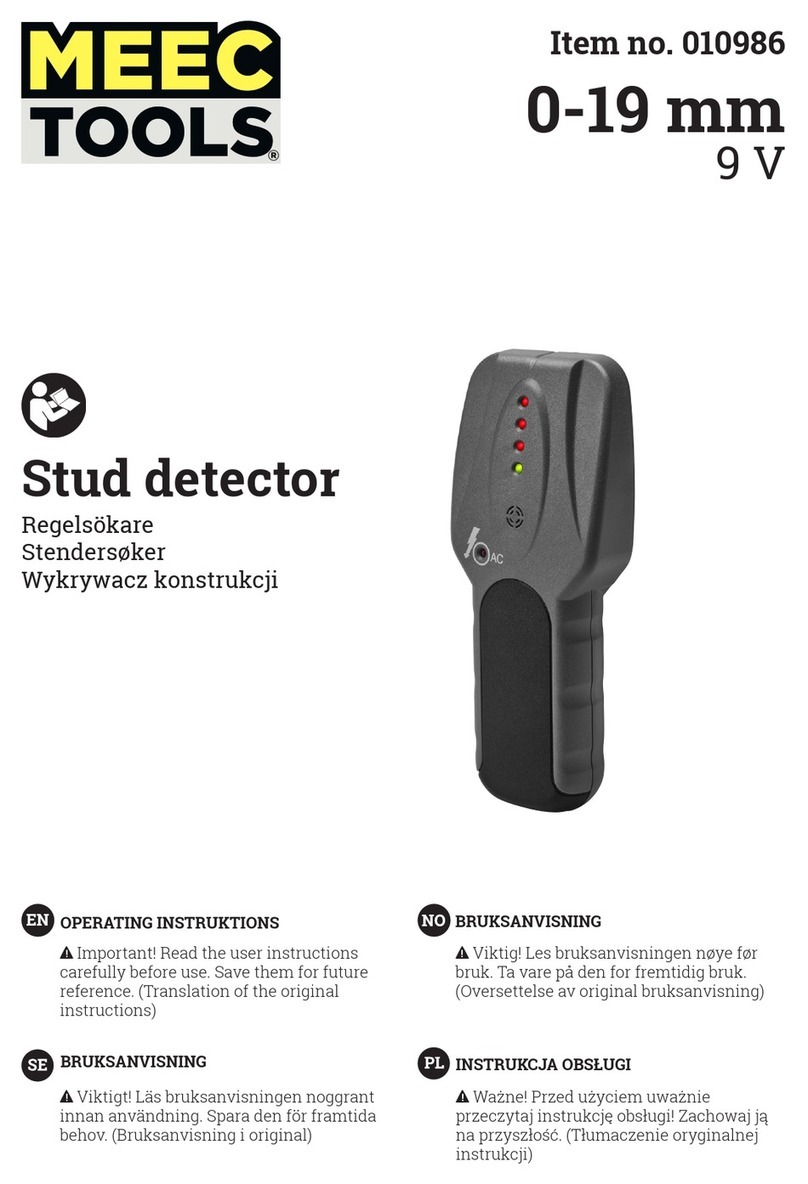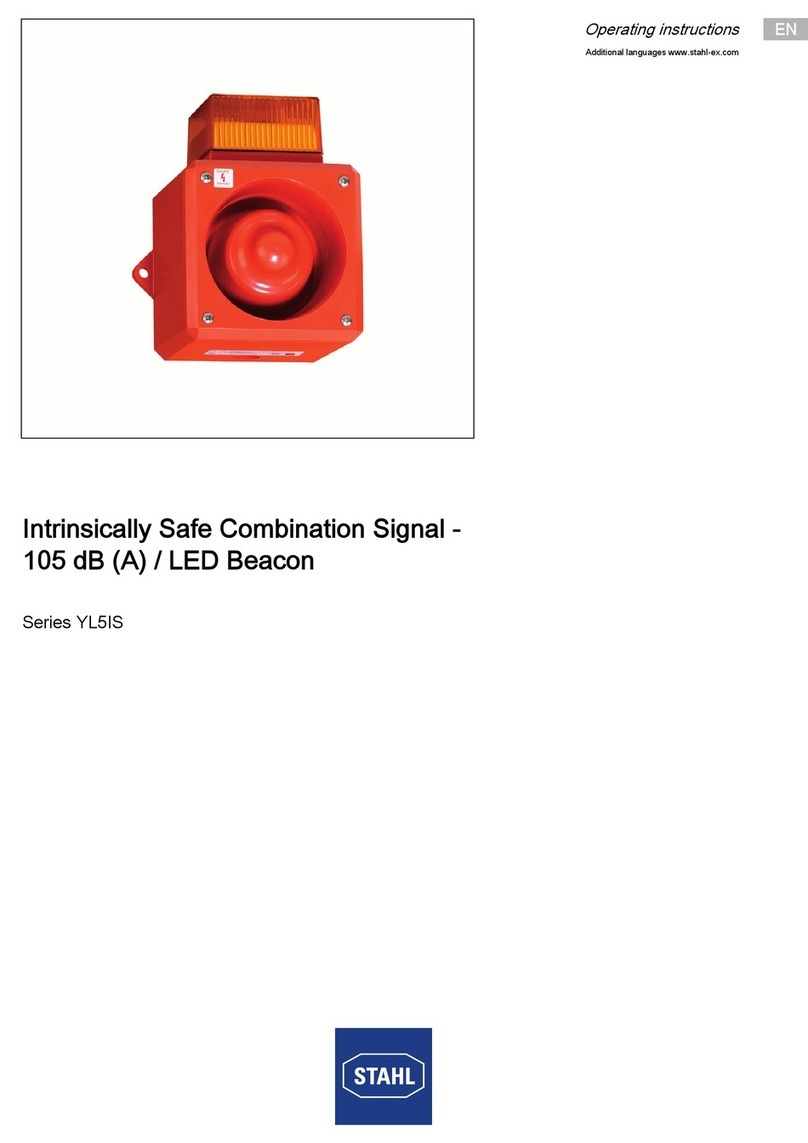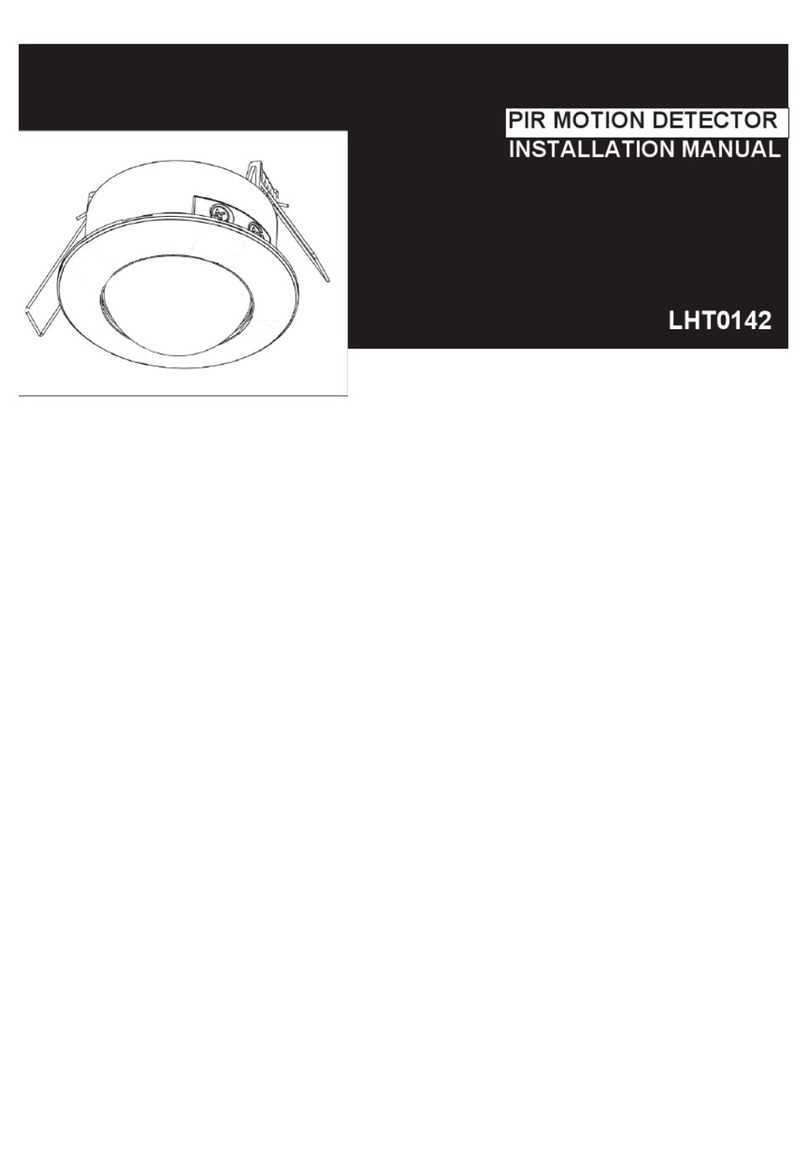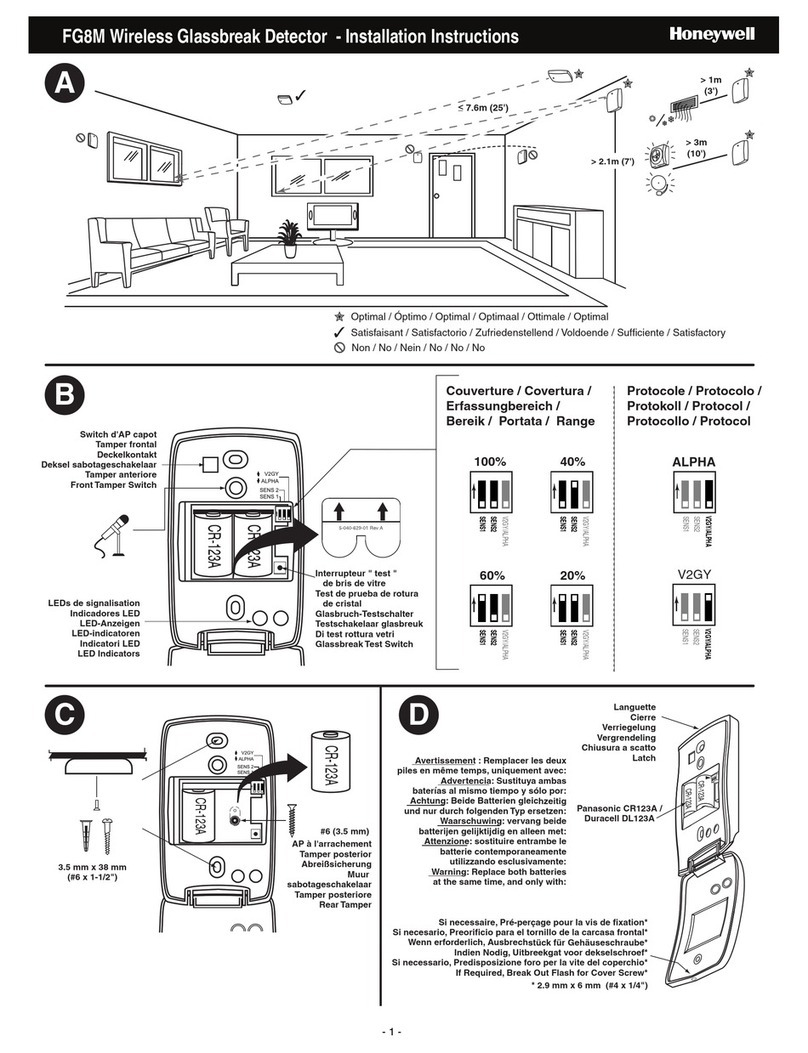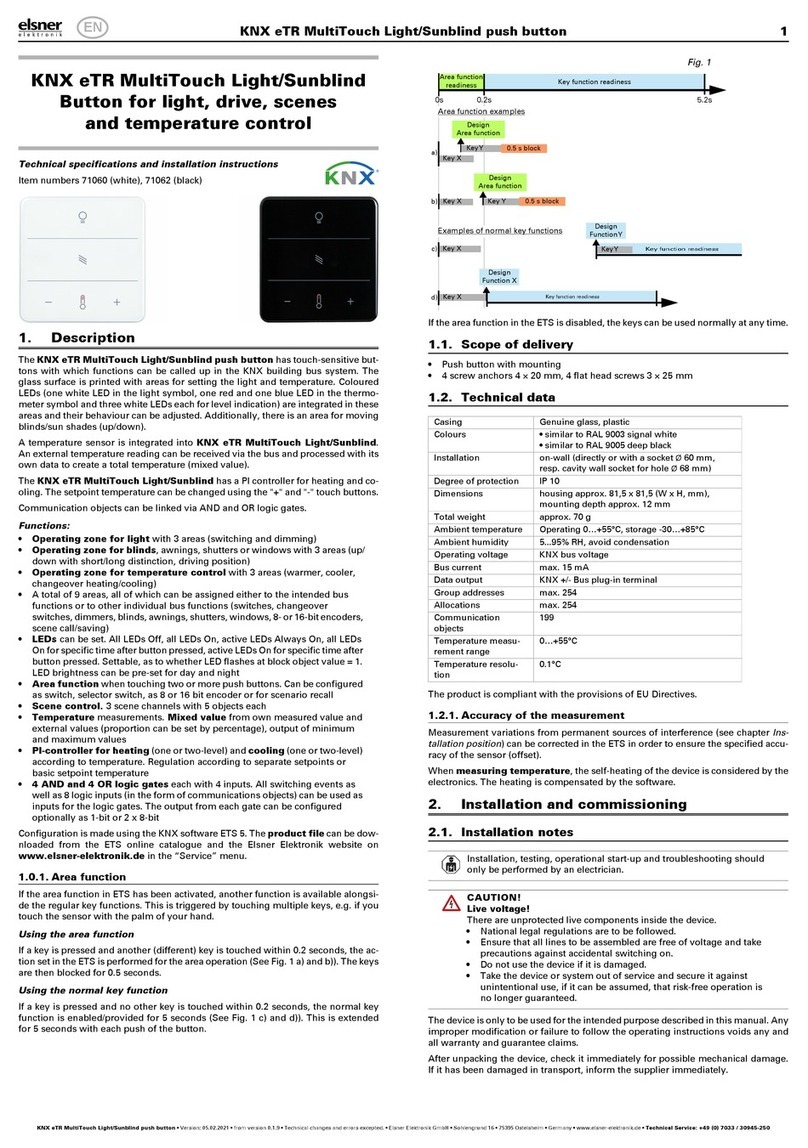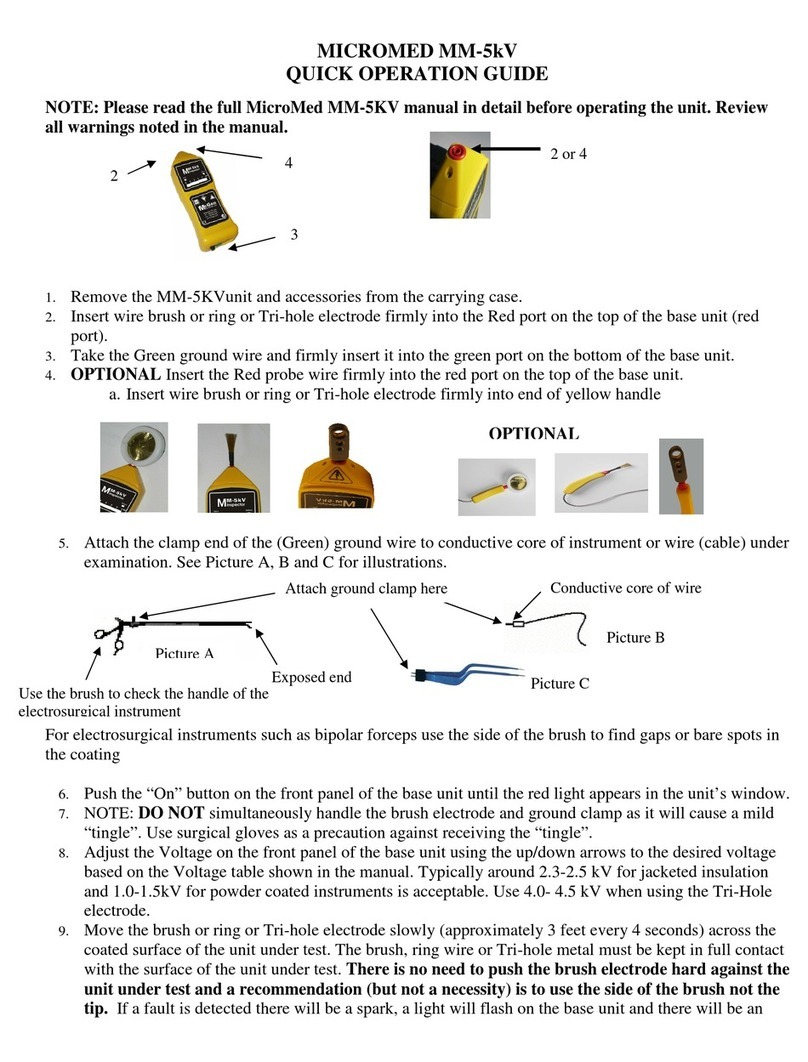Gilson VERITY 1741 User manual

User’s Guide
VERITY® 1741 UV-VIS Detector


Trademarks
All product and company names are trademarks™ or registered® trademarks of their
respective holders. Use of the trademark(s) in this document does not imply any
aliation with or endorsements by the trademark holder(s).


VERITY® 1741 UV-VIS DETECTOR | USER’S GUIDE
TABLE OF CONTENTS
SAFETY | 1
General Operating Instructions | 2
Symbols and Signs | 2
Safety Notices | 2
Chemical Hazards | 3
Adherence to Laboratory Regulations | 3
Voltage | 3
Replacement Parts | 3
CHAPTER 1 | INTRODUCTION | 5
Description | 6
Unpacking | 8
Technical Specifications | 9
Customer Service | 10
Unpacking | 8
Technical Specifications | 9
Customer Service | 10
CHAPTER 2 | INSTALLATION | 11
Test Cell Removal | 12
Flow Cell Installation | 12
Plumbing Connections | 13
Door Installation | 15
Waste Tubing Assembly Installation | 15
Rear Panel Connections | 16
CHAPTER 3 | OPERATION | 19
Front Panel | 20
Start Up | 20
Turn Lamp On | 21

TABLEOFCONTENTS |VERITY® 1741 UV-VIS DETECTOR
TABLE OF CONTENTS
CHAPTER 4 | MAINTENANCE | 23
Lamp Replacement | 24
Intensity Calibration after Lamp(s) Replacement | 28
Fuse Replacement | 29
Cleaning and Decontamination | 30
Flow Cell Replacement | 30
CHAPTER 5 | TROUBLESHOOTING | 31
Troubleshooting | 31
Repair and Return Policies | 32
APPENDIX A | PARTS AND ACCESSORIES | 33
VERITY 1741 Detector and Shelf Accessory | 33
Lamps | 33
Miscellaneous | 34
Flow Cells/Tubing/Fittings | 34
APPENDIX B | FRONT PANEL CONTROL | 37
Description of Symbols on the Screen | 38
Operating Modes | 39
Working with the Menu | 41
Parameters | 41
Preferences | 43
IO Config | 45
Analog Outputs | 48
Info | 48
Diagnostics | 50
Service | 52

1
VERITY® 1741 UV-VIS DETECTOR | USER’S GUIDE
Chapter3|SaFetY
For your own safety, read this user’s guide and always observe the warnings and safety information
on the detector and in this user’s guide.
The VERITY® 1741 UV-VIS Detector is intended to be used in a laboratory environment by trained
technical personnel.
VERITY 1741 Detector control is via Ethernet and TRILUTION® LC Software or via the front panel.
IN thIS Chapter:
●General Operating Instructions | 2
●Symbols and Signs | 2
●Safety Notices | 2
●Chemical Hazards | 3
●Adherence to Laboratory Regulations | 3
●Voltage | 3
●Replacement Parts | 3

SAFETY
2SAFETY |VERITY® 1741 UV-VIS DETECTOR
General Operating Instructions
CAUTION
The detector may not be used if it is leaking.
Do not place detector or any other equipment so that disconnecting power cord is dicult.
Never manipulate with the detector if the door is mounted. There is a danger of its damage.
UV light is dangerous for eyes. During regular operation of the detector, UV light is shielded.
While exchanging or replacing the flow cell, never look in the cell area. Always put in at least
the test cell. Always disconnect the power cord when replacing a lamp.
Never remove the cover. There is nothing needing customer service or maintenance inside the
detector.
The detector may only be used in accordance with the precautions for handling liquid. For
information on safety precautions when working with liquids, refer to the safety data sheets
for each liquid.
Symbols and Signs
The following table explains symbols and labels that are used on the detector or in the user’s guide:
Symbol Meaning
UV light is dangerous for your eyes. If the flow cell is installed in the detector, then the UV light is
shielded. When performing flow cell maintenance, it is very important to protect your eyes with
glasses that absorb UV light.
The detector is an electrical device. Disconnect the power cord before servicing.
Caution
Safety Notices
The following safety notices may appear in this document:
WARNING
WARNING indicates a potentially hazardous situation which, if not avoided, may result in
serious injury
CAUTION
CAUTION indicates a potentially hazardous situation which, if not avoided, may result in minor
or moderate injury
NOTICE
NOTICE indicates a potentially hazardous situation which, if not avoided, may result in
equipment damage

SAFETY
3
SAFETY | USER’S GUIDE
Chemical Hazards
Any chemicals used for analysis should be handled according to good laboratory practices.
Chemicals should be stored, used, and disposed of in accordance with the manufacturer’s
specifications, as well as local and national regulations. Potentially hazardous chemicals and
dangerous liquids can be used with the instrument. Use care when handling chemicals and
solvents. Ensure proper ventilation and wear appropriate personal protective equipment (PPE),
such as safety glasses, gloves, etc.
Be sure to follow guidance about exposure to hazardous levels of toxic substances as outlined
in any applicable Safety Data Sheet (SDS), or any documentation provided by local governing
bodies such as The Health Protection Agency (United Kingdom) or The Occupational Safety and
Health Administration (United States).
Adherence to Laboratory Regulations
Observe national and international regulations pertaining to laboratory work.
Voltage
Ensure that the rear panel is accessible. Detach all sources of voltage from the instrument before
the service, repair, or exchange of parts. Use only the grounded AC cord provided. Ungrounded
power cords can result in electrical shock and serious personal injury. Use only approved fuses
with the specified current rating. The instrument must be operated within the voltage specified
on the rear panel of the instrument.
Replacement Parts
Be sure to use only replacement parts mentioned in this user’s guide. Do not repair or change
parts which are not listed in this user’s guide. If it is necessary to change parts not listed, please
contact your Gilson-authorized representative.

This page intentionally left blank

5
VERITY® 1741 UV-VIS DETECTOR | USER’S GUIDE
Chapter 1
Chapter1|INtrODUCtION
The VERITY® 1741 UV-VIS Detector is for use in semi-preparative to preparative high performance
liquid chromatography (HPLC) purification systems and provides multiple-wavelength scanning
detection from 200–800 nm. The VERITY 1741 Detector is controlled via its front panel or
TRILUTION® LC Software as a component in an HPLC system. Multiple, different wavelengths
can be used to simultaneously trigger fraction collection. With the real-time spectra display in
TRILUTION LC, users can quickly identify co-eluting impurities and other purification issues. By
offering an extensive range of flow cell pathlengths, a wide array of applications is possible. The
VERITY 1741 Detector has long-lasting lamps, lamp life counters, and interchangeable flow cells.
IN thIS Chapter:
●Description | 6
●Unpacking | 8
●Technical Specifications | 9
●Customer Service | 10

6INTRODUCTION |VERITY® 1741 UV-VIS DETECTOR
DeSCrIptION
Description
The images in this section show the main components of the VERITY 1741 Detector.
Front View
To prevent damage during shipping, the detector is shipped with the door removed.
Figure 1
VERITY® 1741 UV-VIS Detector - Front View (Door Removed)
NO. DESCRIPTION
1Front power switch
2
Status LED lights:
LAMP indicates the lamps are on (green).
RMT indicates that the detector is connected to the remote control (orange).
ERROR indicates an error (red).
3Display
4Keypad
5LAMP key for turning lamps on for use with front panel control
6Leak sensor
7Door hinges
8Flow cell compartment
9Deuterium lamp access

7
VERITY® 1741 UV-VIS DETECTOR | USER’S GUIDE
DeSCrIptION
Side View
Figure 2
VERITY® 1741 UV-VIS Detector - Side View
NO. DESCRIPTION
1Light sources are under a small cover. Remove the cover when replacing the lamp(s).
Rear View
Figure 3
VERITY® 1741 UV-VIS Detector - Rear View
NO. DESCRIPTION
1Power switch, fuse drawer, and power receptacle
2Connector Ethernet/LAN
3Connector IO INTERFACE
4Analog outputs A, B, C, D
Lamps
A deuterium lamp and a tungsten lamp are used in the detector.

8INTRODUCTION |VERITY® 1741 UV-VIS DETECTOR
DeSCrIptION
Leak Sensor
The leak sensor contains a reference and a measuring sensor. If the measuring sensor is
immersed in liquid, then the sensor generates a signal. Processing of this signal is handled in
TRILUTION LC, or via front panel control. For more information about front panel control, refer
to Appendix B | Front Panel Control on page 37.
If a leakage occurs, it is first necessary to eliminate the leakage, and then dry the area of the
liquid drain and the measuring sensor.
Unpacking
The detector is delivered with most of the major components already assembled. Retain all
packing material so the detector may be shipped safely in the future. Store the installed test cell
after removal as it is used when testing the lamp.
Standard Equipment
●VERITY 1741 Detector with test cell (installed)
●Screwdriver (for loosening the lamp cover and lamp holder)
●Open End Wrench (for loosening the lamp)
●Power Cord
●Fuse
●Ethernet Cable (1 m)
●Terminal Block Connector (6-pin)
●Waste Tubing Assembly
●Analog Output Cable (1 m)
●Removable Door
●VERITY® 1741 UV-VIS Detector Documentation USB that includes
○User’s Guide
○Installation Qualification (IQ)
○Declaration of Conformity
○China RoHS Declaration Table
○TRILUTION® LC Software for VERITY® 1741 UV-VIS Detector Instructions
Required Accessory
FLOW CeLL
A flow cell is a required item, but is ordered separately, depending on your
application. Inlet/outlet tubing and fittings are supplied with each flow cell. Refer to
Appendix A | Parts and Accessories on page 33 for part numbers.
Optional Accessory
SheLF
An optional stacking shelf that was designed for use with the VERITY 1741 Detector is ordered
separately (part number 21040255). It allows for stacking a pump on top of the detector.

9
VERITY® 1741 UV-VIS DETECTOR | USER’S GUIDE
teChNICaL SpeCIFICatIONS
Technical Specifications
SPECIFICATION DEFINITION OR VALUE
Communication Interface LAN (Ethernet)
Control Front panel control or computer control via Ethernet and TRILUTION® LC Software
Wavelength Range 200–800 nm (256 CCD elements)
Wavelength Accuracy ± 1 nm
Wavelength Reproducibility ± 0.5 nm
Noise ± 5 x 10-5 AU using a test cell (254 nm, timeconstant 1s)
Refer to ASTM
Drift 1 x 10-3 AU/hr using a test cell (254 nm after 1 h)
Refer to ASTM
Maximum Data Rate 20 Hz
Flow Cells Part
Number
Pathlength
Internal
Volume
Maximum
FlowRate
Connecting Thread
Internal Tubing
14161011 1.3 mm 55 µL 200 mL/min 10-32
1/16" stainless steel tubing
14161014
0.5 mm 50 µL 200 mL/min 10-32
1/16" stainless steel tubing
14161012
0.1 mm 40 µL 200 mL/min 10-32
1/16" stainless steel tubing
14161013
0.05 mm 40 µL 200 mL/min 10-32
1/16" stainless steel tubing
14161015
1.3 mm 55 µL 500 mL/min ¼-28
1/8" FEP tubing
14161018
0.5 mm 50 µL 500 mL/min ¼-28
1/8" FEP tubing
14161016
0.1 mm 40 µL 500 mL/min ¼-28
1/8" FEP tubing
14161017 0.05 mm 40 µL 500 mL/min ¼-28
1/8" FEP tubing
Maximum pressure for all flow cells is 2 MPa (290 psi, 20 bar)
Light Sources Deuterium and tungsten lamps
Liquid Contact Materials FEP, fused silica, stainless steel, PEEK, KEL-F
Time Constant 0.1 s, 0.2 s, 0.5 s, 0.75 s, 1 s, 2 s, 4 s, 8 s, 16 s
TECHNICAL SPECIFICATIONS CONTINUED ON PAGE 10

10 INTRODUCTION |VERITY® 1741 UV-VIS DETECTOR
teChNICaL SpeCIFICatIONS
SPECIFICATION DEFINITION OR VALUE
Typical Spectral Half-Width 10 nm
Digital Output 1 V/AU
Output Signal Four wavelength (channels) or scan with speed up to 20 Hz with step of 1 nm
Ranges of Four Adjustable 1 V
AnalogOutputs
5, 2, 1, 0.5, 0.2, 0.1 AU/V
Fuse T2.5A H 250V
Power Requirements Voltage: 100–240 V AC
Frequency: 50/60 Hz
Power Input 100 VA
Environmental Conditions Indoor use only
Altitude: up to 2000m
Temperature: 5°C–40°C
Humidity: maximum relative humidity 80% for temperatures up to 31°C decreasing
linearly to 50% relative humidity at 40°C
Voltage fluctuations: up to ± 10% of nominal voltage
Overvoltage category I
Pollution degree 2
Safety and Compliance The detector has been certified to safety standards specified for Canada, Europe,
and the United States. Refer to the instrument rear panel label and the Declaration
of Conformity document for the current standards to which the instrument has
been tested.
Dimensions (W x H x D) 28.5 cm x 14.9 cm x 50 cm (11.2 x 5.9 x 19.7 in.)
Weight 7.5 kg (16.5 lb.)
Customer Service
Gilson, Inc. and its worldwide network of authorized representatives provide customers with
the following types of assistance: sales, technical support, applications, and instrument repair.
If you need assistance, please contact your local Gilson representative. Specific contact
information can be found at www.gilson.com. To help us serve you quickly and efficiently, please
refer to BeforeCallingUs on page 32.

11
VERITY® 1741 UV-VIS DETECTOR | USER’S GUIDE
Chapter 2
Chapter2|INStaLLatION
Place the detector in a suitable location that satisfies the following conditions:
●Level surface.
●Keep at least 10cm space behind the rear of the detector.
●Keep away from equipment generating a strong magnetic field.
●Sunlight does not shine directly on the instrument.
●Equipment is intended for use in regular laboratory environment only.
IN thIS Chapter:
●Test Cell Removal | 12
●Flow Cell Installation | 12
●Plumbing Connections | 13
●Door Installation | 15
●Waste Tubing Assembly Installation | 15
●Rear Panel Connections | 16

12 INSTALLATION |VERITY® 1741 UV-VIS DETECTOR
teSt CeLL remOvaL
Test Cell Removal
Figure 4
Front View with Door Removed
The detector is shipped from the factory with the door removed
and a test cell installed, which does not have connections for
solvent. Before using the detector with solvents, the test cell must
be removed and a flowcell must be installed.
Loosen the holding screws to remove the test cell. Store the installed
test cell after removal as it is used when testing the lamp.
Flow Cell Installation
1.
Insert the flow cell holder in the flow cell
compartment on the front of the detector.
2. Tighten the holding screws.
Figure 5
Test Cell
Figure 6
Test Cell Removal
Figure 7
Flow Cell Installation in the Flow Cell
Compartment on the Front of the Detector
Figure 8
Tighten the Holding Screws

13
VERITY® 1741 UV-VIS DETECTOR | USER’S GUIDE
pLumbINg CONNeCtIONS
Plumbing Connections
This section describes how to make inlet and outlet tubing connections and uses tubing and
fittings supplied with the flow cell. The 1/8" flow cells are supplied with FEP tubing OD 1/8” and
the 1/16" flow cells are supplied with PEEK tubing OD 1/16”.
Inlet/Outlet Tubing Preparation
Cut the supplied tubing into two pieces. One is used for the column outlet to detector flow cell
inlet and the other is used for the detector flow cell outlet.
Inlet Tubing Connection
1. Put the fitting(s) supplied with the flow cell on one end of one piece of the cut tubing. Use
only nuts and ferrules made of PEEK or KEL-F.
●For 1/16” flow cells, put a PEEK one-piece nut on one end of the tubing.
●For 1/8” flow cells, put a KEL-F ferrule 1/8” and a PEEK nut 1/8” on one end of the tubing.
The ferrule tip should point to the nut.
Figure 9
One-piece Nut for
1/16" Flow Cells
Figure 10
Nut and Ferrule for
1/8" Flow Cells
2. Connect the tubing to the lower flow cell
inlet. The column outlet must be connected
to the lower flow cell inlet to allow liquid
to flow upward. If connected otherwise, it
may result in problematic degassing of the
cell. Finger tighten the fitting.
NOTE
If placing the detector in direct sunlight,
penetration of stray light to the flow
cell may occur. In such case, protect the
ends of the inlet tubing with dark plastic
tubing.
3.
Connect the other end of the tubing to the
column outlet (fitting not supplied).

14 INSTALLATION |VERITY® 1741 UV-VIS DETECTOR
pLumbINg CONNeCtIONS
Outlet Tubing Connection
1. Put the fitting(s) supplied with the flow cell on one end of the other piece of the cut tubing.
Use only nuts and ferrules made of PEEK or KEL-F.
●For 1/16" flow cells, put a PEEK one-piece nut on one end of the tubing.
●For 1/8" flow cells, put a KEL-F ferrule 1/8” and a PEEK nut 1/8" on one end of the tubing.
The ferrule tip should point to the nut.
2. Connect the tubing to the upper flow cell outlet. Finger tighten the fitting.
3. The other end of the tubing can be connected to:
●a back pressure regulator
●the inlet of the fraction collector in order to collect the column euent.
Use an appropriate coupler to make the connection. These fittings are not supplied.
●a waste container if the column euent does not need to be saved.
NOTICE
After making all tubing connections, turn on the mobile phase pump and check all connections
for leaks. Control potential leaking not only after detector installation, but also during
operation.
NOTE
Side and top slots on the detector front panel are designed to accommodate inlet and outlet tubing.
The 1/8" OD FEP tubing is fitted by pressing the tubing into the slot. The 1/16" OD tubing can be
fitted using a short piece of FEP tubing with outer diameter 1/8" and inner diameter 1/6", threaded
on the 1/16" tubing. Tubing threaded this way cannot be pressed in and it is fitted by inserting from
the side into the slot.
Table of contents
Other Gilson Security Sensor manuals
Popular Security Sensor manuals by other brands
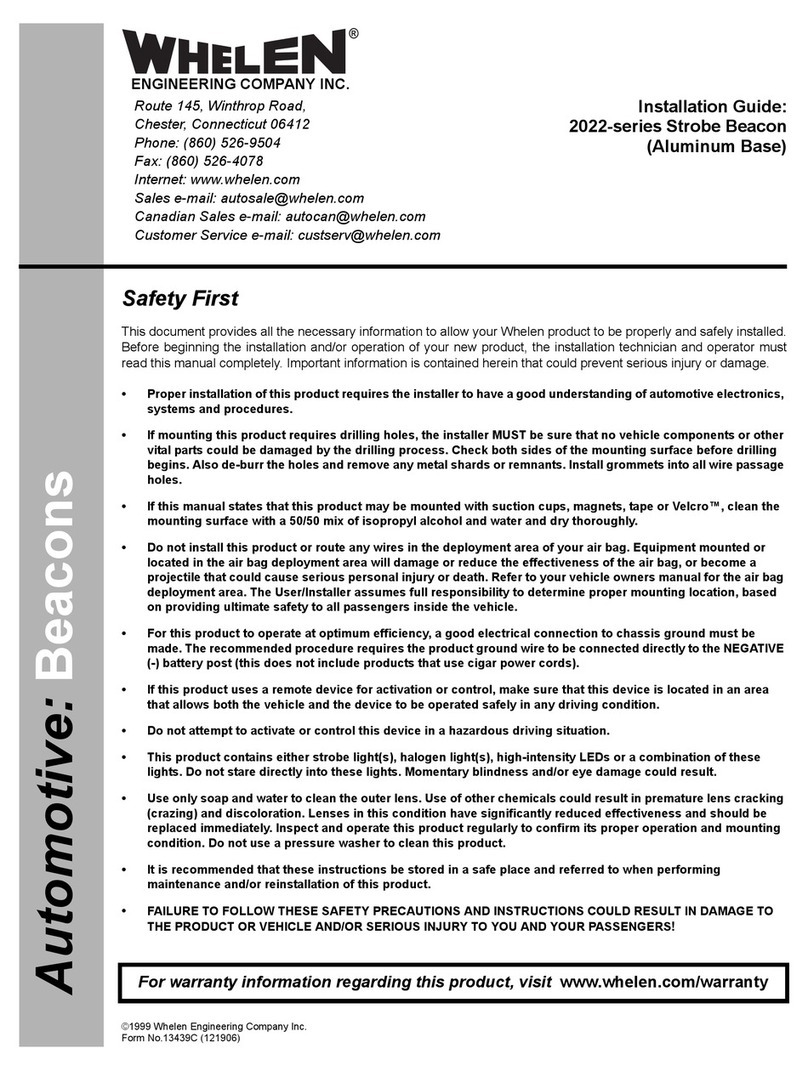
Whelen Engineering Company
Whelen Engineering Company 2022 Series installation guide
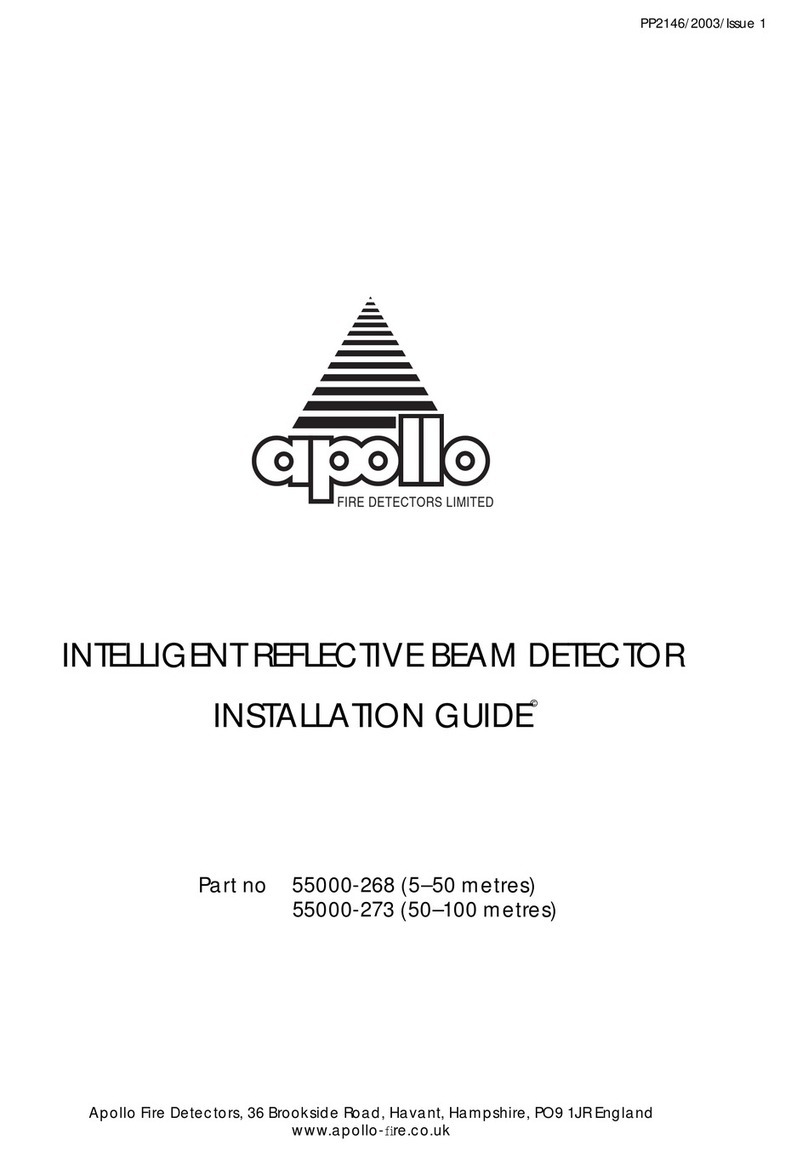
Apollo
Apollo 55000-268 installation guide
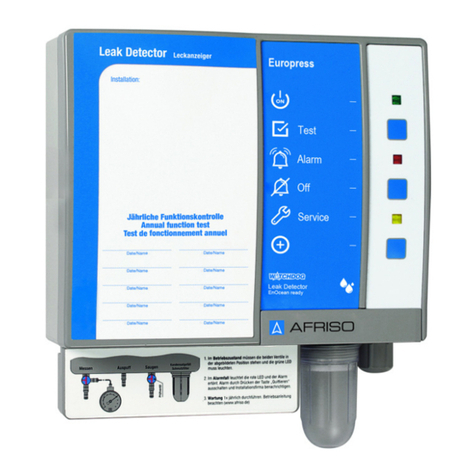
AFRISO
AFRISO Europress operating instructions
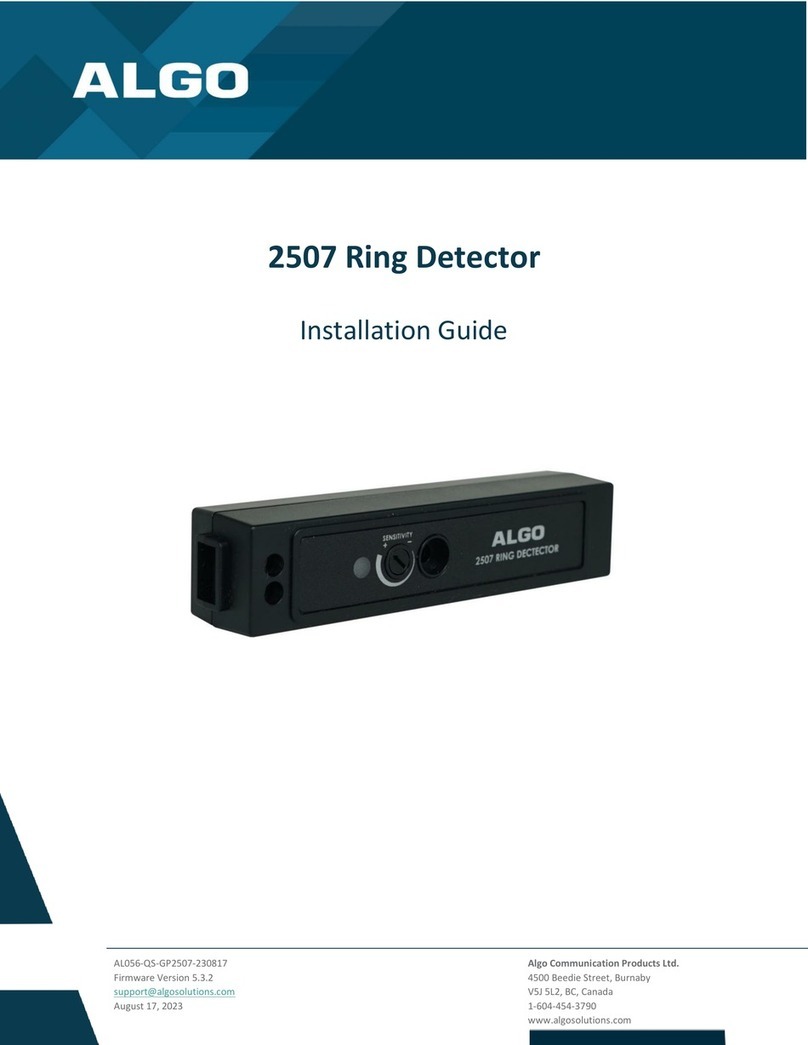
Algo
Algo 2507 installation guide
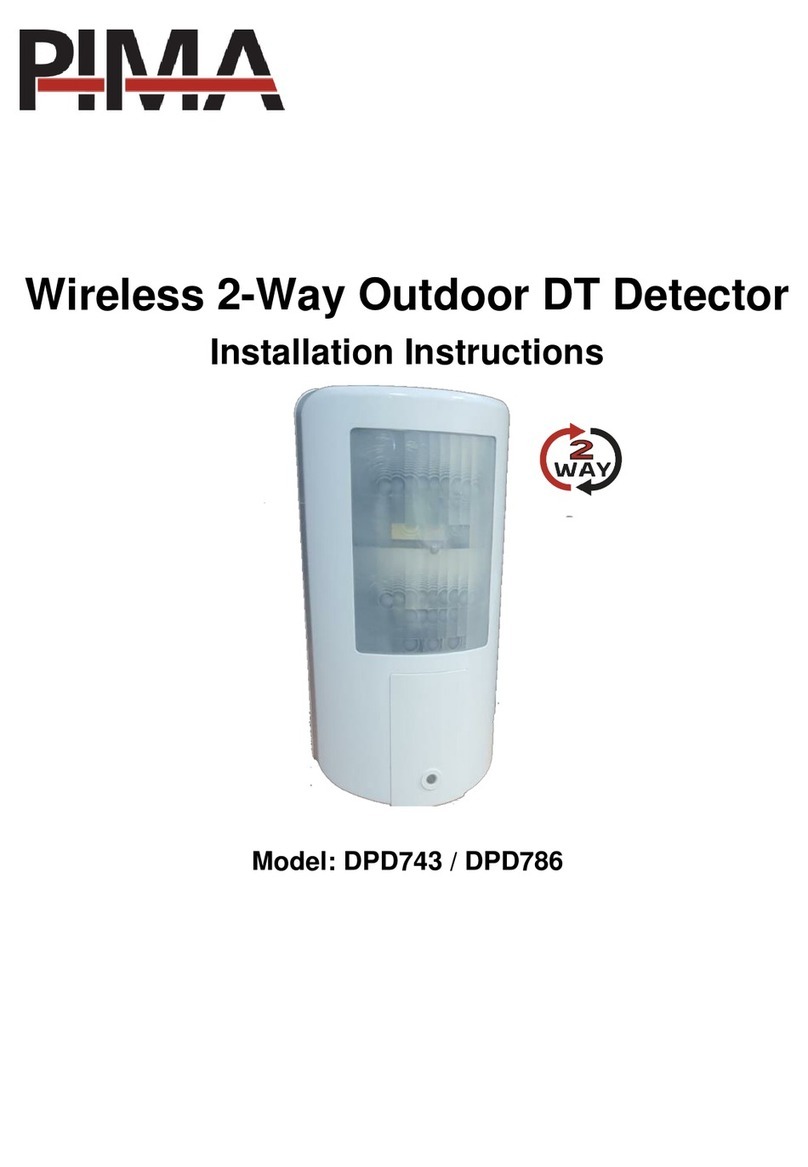
Pima
Pima DPD743 installation instructions
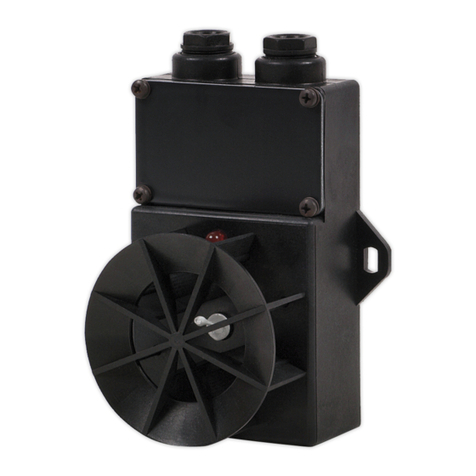
Polon-Alfa
Polon-Alfa TUN-38Ex Installation and maintenance manual


